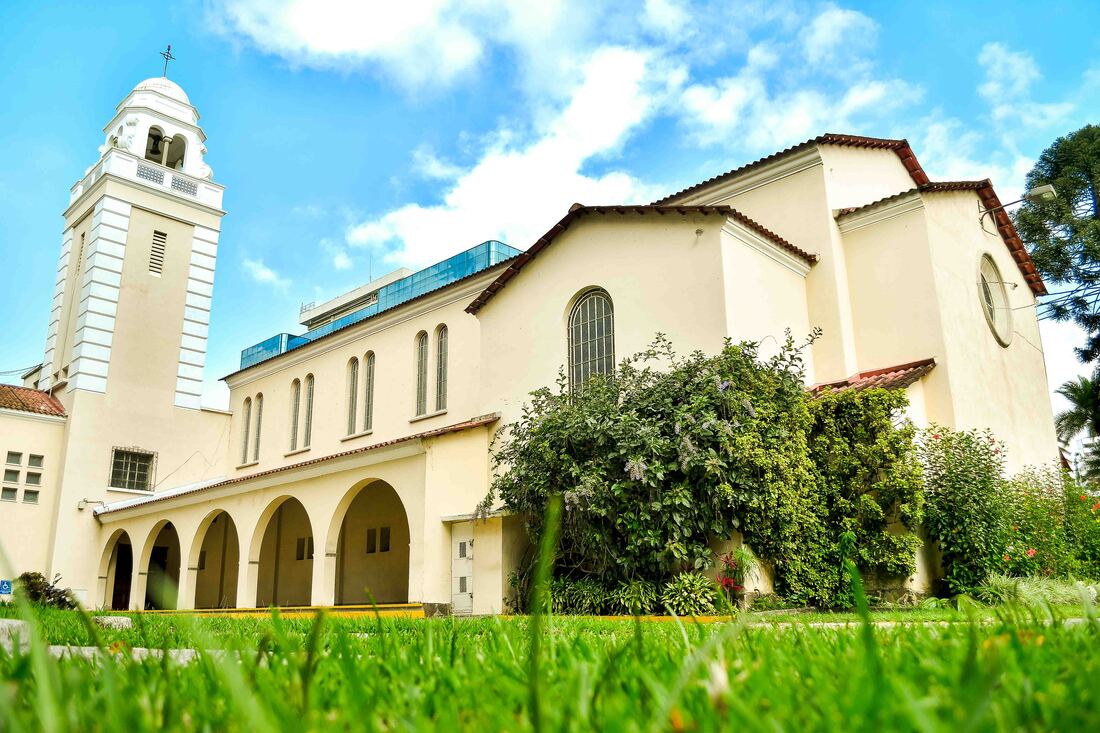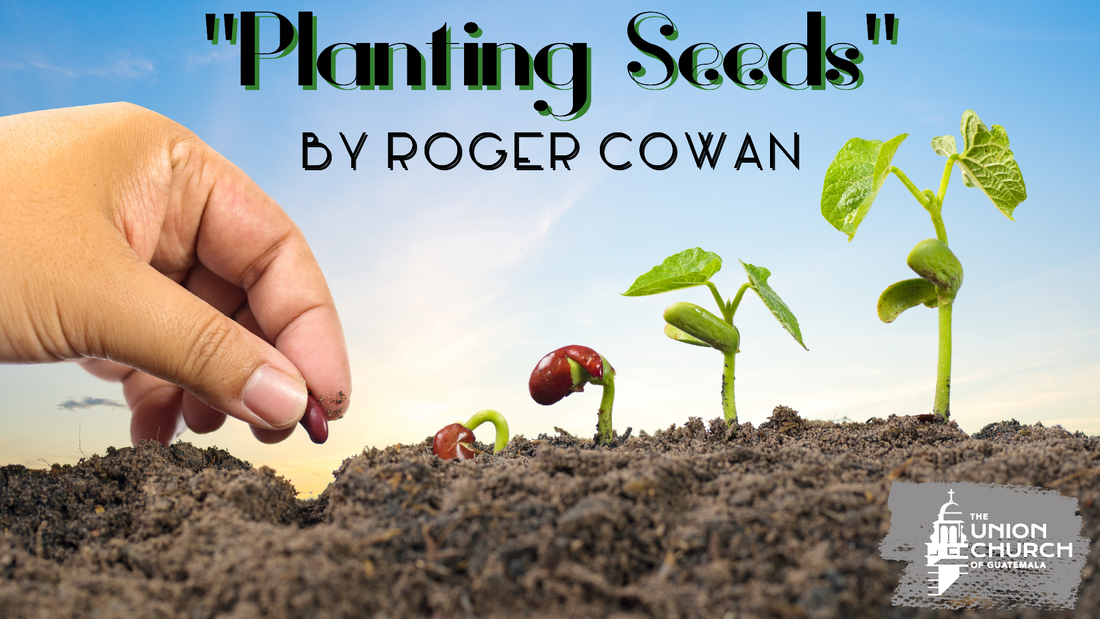|
One advantage to teaching is learning. I was showing high school students how to force their minds to slow down and think about a passage of Scriptures. Oh. Sorry! I mean, I was showing them various Bible study methods. Consider John 17. We noticed that our ESV Bibles conveniently provided paragraphs at verses 1, 6, and 20. We observed that the three paragraphs had Jesus praying for himself, his apostles, and future disciples.
Jesus prayed to the Father in the first paragraph. Verse 1, Jesus asked for the Father’s glory so that Jesus might glorify the Father. Verse 2, Jesus had the authority to give life to all flesh. Verse 3 tells us this is “eternal” life. I see Jesus glorified the Father on earth by giving eternal life to men. Called “work,” Jesus was showing his followers the true God who gives eternal life. Here is a “work” that gives life rather than seeks it. As we reread the paragraph, I decided to delay a verse-by-verse study and look more closely at “glory.” It and “glorified” are used five times in as many verses! I highlighted these “glories” in a conspicuous yellow. Then I scanned the rest of the chapter hunting for the “glory” word. But I wanted to be sure that I got all of them. There are plenty of zippy concordances on the Internet. My students now know that if you enter “glor* ” as a search term, you will find every form of the word. I was soon sure I had all of the John 17 “glories”, including verses 10, 22, and 24. After applying some more glowing yellow highlighter, we found glory appears in all three paragraphs. Intriguing! I had guessed that there might be a connection. In paragraph two, Jesus said that he was glorified by his apostles in verse 10. They received the truth and believed that the Father had sent Jesus. Just as the Father sent Jesus into the world to manifest the true God and eternal life, Jesus sent these apostles into the world. They continued the same work that Jesus had begun. They received glory from Jesus. We find our next “glory” in paragraph three with Jesus and future disciples. That included you and me, today. Jesus prayed in verse 24 that we might be with Jesus and see his glory. Our “work” today is proclaiming the gospel of eternal life through Jesus Christ. We do the same work as Jesus and the apostles. We receive the same glory the apostles had with Jesus. All this started in a classroom of high school students. Had we continued an Internet only classroom environment, I doubt any of this would have been realized. My diversion turned out to be a worthwhile distraction. I pray that you consider sharing the good news of eternal life in Jesus Christ. This is the “work” that Jesus began and we continue today. Greg Malczewski Note: Note: Study suggestions:
0 Comments
Scars are evidence of physical traumas. I have many, like the one resulting from a deep cut in my leg by an electric saw as a teenager. All were caused by, or resulted from, accidents.
Resurrection Sunday marks the end of Holy Week, when we remember how Jesus suffered more than we can possibly know. But now he is the glorified risen Lord. His resurrection is not the end of the story! Early Sunday he rose, later appearing to ten of his disciples, there he showed them his hands and feet. (Luke 24:36-40) A week later he again appeared to the ten, and also Thomas. John 20:26-28 records Jesus saying to Thomas. "Put your finger here, and examine my hands. Extend your hand and put it into my side. Do not continue in your unbelief, but believe." (NET) It took no more than to see Jesus’ wounds for Thomas to declare "My Lord and my God!" In showing his scars to him Jesus showed what it cost to forgive and redeem him and us. Approximately sixty years later in Revelation 5:6 John again speaks of Jesus's wounds, though not mentioning his hands, side nor feet. Rather, he sees a visible metaphor of "a Lamb that appeared to have been killed." (NET) The time is coming when we too will see Jesus face to face. I doubt there will be any need for Jesus to chastise us to believe , as he did his disciples. But, will we see him with wounds as the disciples did? Or will eternity be absent of the visible cost to God that the disciples saw? There are only a few passages that make reference to the visible wounds of our risen Lord. Nevertheless, it is reasonable to consider that he will still bear his wounds when we see him. The Gospel writers Luke and John are quite clear that Jesus did retain his wounds after he rose from the dead. Revelation 5:6 does not mention what wounds were visible on the Lamb, but the following context (5:9-12) leaves no doubt that the Lamb that appeared to be killed is Jesus. Maybe his wounds are temporary, just long enough for all to see, possibly at the White Throne. Maybe they will be permanent for all eternity. Either way we will see him just as the disciples did nearly 2,000 years ago. We could even ask, "What does it matter whether or not we see his wounds?" It mattered to Thomas. Perhaps Jesus will be the only being in the eternal kingdom that will have markings of suffering. But as for us, no one will be blind, walk with a limp nor be deaf. Disease, illness or even a mild cold will not exist. We will have resurrected bodies that are without any kind of imperfection. My scars, all by accident will be gone, but the scars Jesus has were not an accident. The body of Jesus may retain the signs of his suffering. His were planned. And that is what matters to me, as they are the essence of what provided me with salvation. What will you do with the nail scarred hands of Jesus? Marty Quigley In Matthew 13:3-8 Jesus gives a parable about a farmer sowing seeds. As the farmer scattered the seeds, some fell on a path and were eaten by birds. Others fell on rocky places. They sprang up quickly but then withered and died because they could not take root. Those that fell among the thorns were choked. But the seeds that fell on good soil “produced a crop a hundred, sixty or thirty times what was sown”.
In his parable, Jesus is really talking about people who hear the Word. Some ignore or reject the message. Others are superficially inspired, but then they fall back into their previous routines and the inspiration dies out without really taking root. Others are ridiculed by their friends and peers; their interest in Jesus is choked out. Only some have sufficient desire and support to overcome the diverse difficulties, let the message transform their lives, grow spiritually and begin to produce an abundance of fruits. I have never been a farmer. My only experience is that since my youth I have grown some vegetable gardens. But from what I know, no serious farmer is going to just throw the seeds around wherever they may land. Planting seeds is an arduous task that requires tilling the soil, taking out the rocks and thorns, digging furrows, carefully planting the seeds, covering them up, nourishing them with fertilizer, watering them consistently and keeping the weeds and insects away. As Christians and as a church, Jesus has assigned us to go out into the world and spread the Gospel. We cannot do this effectively if we just throw out the Word in Sunday sermons within our four walls and hope that all will come to us, hear it and become fervent, convinced believers. This is even more true if we live and work in the desert-like conditions of an atheistic environment. To do our task effectively, we must become serious farmers. To begin with, in order to reach out to nonbelievers and bring them to Jesus, we should spend time preparing and developing a relationship and trust. This represents tilling the soil. We should discard our bad habits and examples and remove temptations. This is like removing the stones and weeds. Then we should carefully plant the seeds. This can be done by personal example, developing our testimony and making some well-timed presentations of the Word adapted to the circumstance. We should try to bring them to church and, if possible, lead them to accept Jesus as their Lord and Savior. We should make the soil as fertile as possible. Then we wait for the Holy Spirit to give life. We cannot do that no matter how hard we try. Our job is to prepare the ground, plant the seed and provide nourishment as it grows. When the seed sprouts up, our hard work is not over. We must cultivate their relationship with Jesus so that it can grow strong roots. We should nourish it with continual attention, wise teaching, love, prayer and example. We should encourage that they continually seek the water of the Holy Spirit and nurture their relationship through prayer and practice. We should try to help remove the weeds by facilitating a healthy environment. When we do this, most seeds will survive and grow. Then we will see the robust crops that we have planted flourish and eventually produce abundant fruits. Subsequent harvest time will be the occasion for great rejoicing and celebration. |
UCG Writers GroupThe writers group exists to provide hope and guidance through God's word. Archives
May 2021
Categories |




 RSS Feed
RSS Feed
